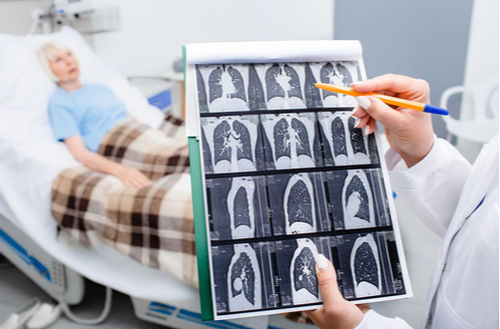Respiratory Health
How Smoking Triggers Skin Health Problems
3 min read
By Apollo 24/7, Published on - 08 October 2021, Updated on - 18 October 2022
Share this article
1
33 likes

Smoking can harm almost every organ of the body and has been associated with heart disease, stroke, lung disease, and diabetes. Smokers are also at increased risk for tuberculosis, autoimmune conditions such as rheumatoid arthritis, and certain eye problems. While many of us are aware of the ill-effects of smoking, little is known about its effect on the skin, the largest organ of the body. Smoking is linked to various skin disorders and is a major cause of premature aging of the skin. This article will explore how smoking affects the biophysical properties of the skin.
Tobacco smoke and skin health
Smoking is harmful to cells, and research shows that tobacco could be a toxic factor to the skin. The various effects of smoking on health are well-known, but its effect on the skin is not fully known. Studies show that tobacco smoke can increase various symptoms related to the aging process of the skin and induce premature aging. Smokers are at a higher risk of developing squamous cell carcinoma, the second most common type of skin cancer. Some skin diseases such as dermatitis, cutaneous lupus erythematosus, and psoriasis are shown to be associated with cigarette smoking.
Study comparing the biophysical properties of skin in smokers and non-smokers
According to a study published in PubMed journal, several biophysical properties of the skin were affected in a group of smokers. The research compared the skin of smokers and non-smokers on cheeks, middle forehead, and inner arm. The study showed several effects on the biophysical properties of the skin:
- The thickness of the epidermis (the outermost layer of skin) and dermis (the layer just beneath the epidermis) was higher in smokers. The thickness of the dermis was significantly higher in smoker’s cheeks which was associated with the combined effect of smoking and sun exposure.
- The echo density of the epidermis and dermis was found to be lower in smokers.
- The skin in smokers was shown to be less elastic than those of non-smokers.
- Trans-epidermal water loss (water that evaporates from the skin surface) was higher in smokers which is linked to the adverse effects of smoking on the skin’s protective barrier function.
- Hydration of skin was lower in smokers than non-smokers that may be related to the reduced skin blood flow and water loss from the skin in smokers.
- Smoking also affected the nasolabial folds (deep lines or wrinkles that run from the bottom of the nose to the corners of the mouth). Smoking made the nasolabial folds and other uneven wrinkles of the face more obvious. This is attributed to the damaging effects of smoking on repair mechanisms of the skin. Smoking is known to affect the synthesis of building blocks of skin, namely collagen and elastin.
- Nicotine in tobacco stimulates the activity of melanocytes (the cells that produce and contain melanin, a dark brown or black pigment in the skin).
Ways to quit smoking to boost skin health
The skin tone of smokers was reported to improve after quitting smoking. Both erythema (redness of the skin) and melanin were shown to reduce after one month of smoking cessation.
A few effective ways to quit smoking include:
- Deciding on quitting smoking and being committed to the healthy habit.
- Controlling the urge to smoke and choosing alternatives such as chewing gums, juices, candies, or healthy snacks instead of cigarettes.
- Considering nicotine replacement therapy for people having withdrawal symptoms.
- Practicing relaxation techniques like meditation and deep breathing to de-stress from withdrawal.
- Exercising to ensure overall fitness and improve lung function.
- Seeking behavioral support such as counseling when experiencing withdrawal symptoms.
Conclusion
Smoking is known to have both short and long-term effects on the skin. Research shows that smoking affects the biophysical properties of the skin, particularly the thickness and density of the layers of skin and also nasolabial folds surface.
Considering the effects of smoking on the skin, one should encourage family members, relatives, and friends to quit smoking. By getting rid of this unhealthy habit, many smoking-related skin conditions can be prevented. Quitting smoking can improve blood flow that provides adequate oxygen and nutrients to skin cells, resulting in healthier skin.
Consult a dermatologist for any queries on skin health.
Respiratory Health
Leave Comment
Recommended for you

Respiratory Health
Suffering From COPD? These 9 Exercises Can Help Relieve Symptoms
Although there is no permanent cure for COPD, exercises can help ease the symptoms and strengthen the lungs to a great extent.

Respiratory Health
World Pneumonia Day: Here Are The Early Signs And Home Remedies
Pneumonia is very common and is the second most common for hospitalisation. Here’s all you need to know about its symptoms, treatment and prevention!

Respiratory Health
How Does Humidity Affect Asthma?
Humidity causes difficulty in breathing especially for people with respiratory conditions like asthma. Humidity is the amount of water vapour or moisture in the air.
Subscribe
Sign up for our free Health Library Daily Newsletter
Get doctor-approved health tips, news, and more.
Visual Stories

Managing COPD During the COVID-19 Pandemic
Tap to continue exploring
Recommended for you

Respiratory Health
Suffering From COPD? These 9 Exercises Can Help Relieve Symptoms
Although there is no permanent cure for COPD, exercises can help ease the symptoms and strengthen the lungs to a great extent.

Respiratory Health
World Pneumonia Day: Here Are The Early Signs And Home Remedies
Pneumonia is very common and is the second most common for hospitalisation. Here’s all you need to know about its symptoms, treatment and prevention!

Respiratory Health
How Does Humidity Affect Asthma?
Humidity causes difficulty in breathing especially for people with respiratory conditions like asthma. Humidity is the amount of water vapour or moisture in the air.